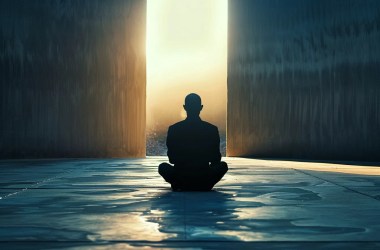In our previous exploration, we dissected Ego as a deceptive architect. Today, let’s zoom out further, to the even larger “blueprints”… our foundational belief systems. These aren’t just personal illusions; they are the collective filters imposed by culture, society, and religion.
We call them The Matrix, a powerful metaphor for the constructed reality surrounding us.
Now, what is even this “Matrix” of Belief Systems?
- Stoic Foundation: Epictetus would say the core lies in distinguishing between things within our control (our judgments) and things outside our control. Marcus takes this further: imagination needs judgment, but that imagination is often shaped by external cultural “blueprints”. Belief systems are the inherited materials and assumptions we use to build.
- Modern View: Cognitive Biases! Social Identity Theory! These explain how external information gets processed and distorted by our “cognitive schemas” influenced heavily by group belonging. Confirmation Bias reinforces existing cultural beliefs…
- Buddhist View (Implicit): Belief systems are “views and opinions” (drishti/ditthi). They are part of the mental framework that creates attachment to a false sense of self. This is where Stoicism and Buddhism converge on the dangers of rigid, culturally imposed identity.
The Nature of Societal/Linguistic/Spiritual Conditioning
Think about this example I used the previous article: “They hate me.” vs. “My job is wonderful!” Let’s analyze the external input:
Input: Two people told you your “work” was good or bad. The word itself carries weight.
The Conditioning: Your mind already has pre-built systems… a “belief system” inherited from culture or upbringing. What does it tell you about “work”?
Perhaps: It’s a place to seek status and admiration.
Or: It’s a necessity, something “good” but not necessarily “wonderful”.
Or: Maybe you learned that good feedback leads to promotion, bad feedback is gossip.
Mechanism: This “belief system” acts like a default setting. When new input (judgment/feedback) comes in, the system automatically filters it:
- Through the lens of “Societal Expectation”.
- Through the filter of “Religious Duty”.
- Example: Imagine someone fails to get a promotion expected from their societal “role”. If that person’s belief system equated success with the promotion itself, they might immediately devalue themselves. They didn’t fail personally or “achieve” anything fundamental; they failed the company’s current plan. Their belief system misapplied judgment.
Why Question These Systems?
- Uncovering False Attachments: Many suffering stems from attaching our core sense of self-worth to things outside our control or transient (“Idols” of the Marketplace). Epictetus might say these “things looked at with pleasure or pain” are illusions.
- Breaking Ego’s Cycle: If Ego uses these external blueprints (“societal scripts”) to build its deceptive narratives, questioning them weakens Ego.
- The Danger of Blind Faith: Without critical awareness (“Negative Visualization” in reverse), we accept these inherited systems as objective truth, limiting our judgment and causing distress when reality doesn’t match their script.
Mind Mirror -> Questioning External Inputs
Stoic Approach: It’s about maintaining a certain “perspective” (phronesis) towards the inputs.
Questioning: It’s not about cynicism, but a methodical inquiry. Stoic Logos requires us to ask:
- “I am told this belief is true. Can I verify it with judgment? Is my perception about myself accurate, or is it filtered?”
- “Does this societal expectation serve my practical flourishing?”
Conditioning vs. Control
The Matrix Delusion: We mistake the filtered, conditioned perception (imagination influenced by belief systems) for absolute reality.
Stoic Resistance: The key is shifting control. As Epictetus said, “Men are disturbed not by things but by judgments.” These belief systems often dictate our judgments. Questioning them is questioning the dictates, thus regaining a degree of control over perception.
My Actionable Take-away:
Identify: What are the key belief systems shaping your view of “work”, “relationships”, or “spirituality”? Don’t laugh, note them down.
Question: Write a paragraph: “I am currently judging [something about work/society/relationships] as follows… Is this judgment based on objective reality or conditioned belief? What if the perception was wrong?”
Dilemma: Recognize that these belief systems contradict Stoic principles if they cause distress or prevent flourishing. This awareness creates the foundation for de-conditioning.
The “Matrix” of Belief Systems isn’t something to escape into the dark (Negative visualization means thinking logically about failure, not necessarily embracing pessimism). It’s something critical awareness helps us navigate. By questioning these external filters, we move one step closer to the Stoic ideal: understanding ourselves and, rather than misinterpreting the world.











